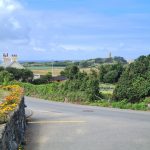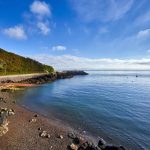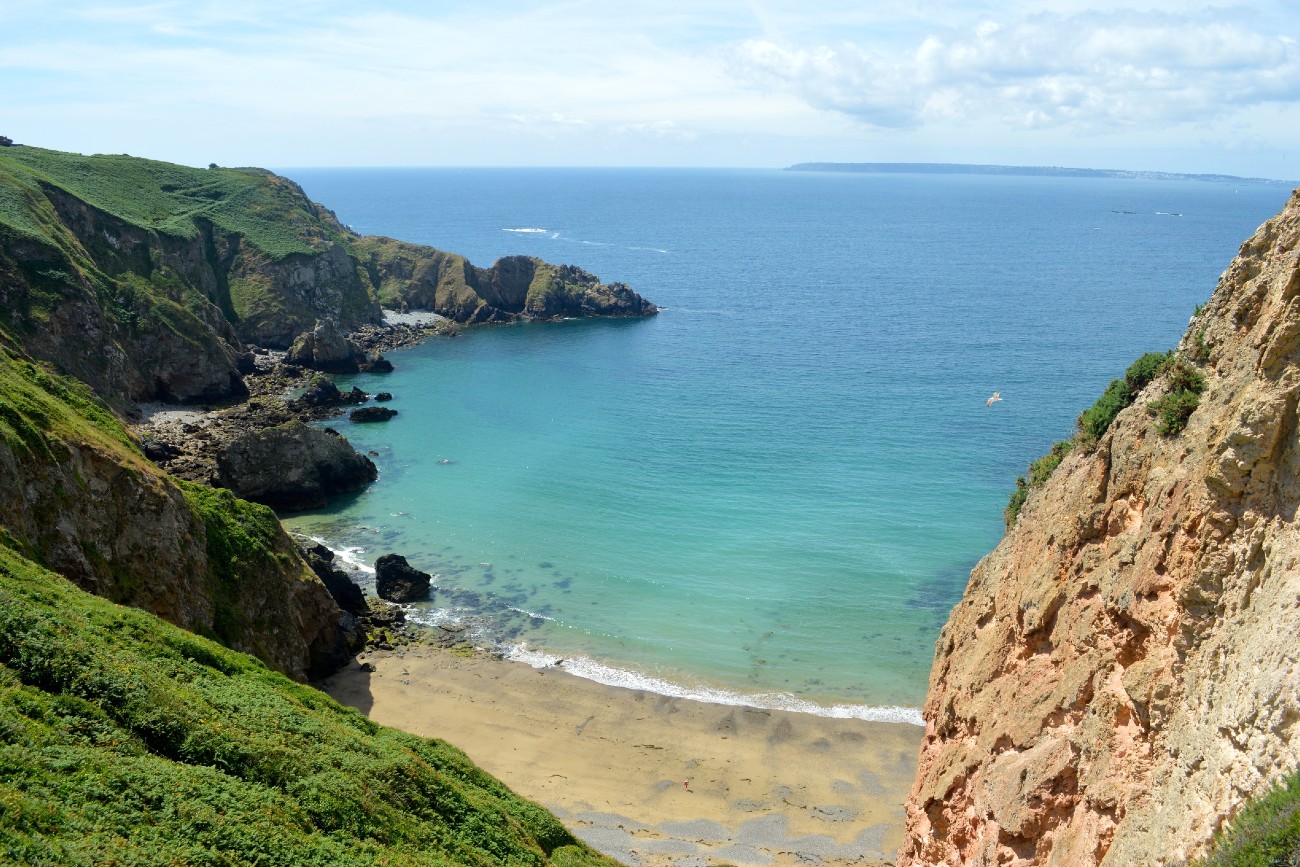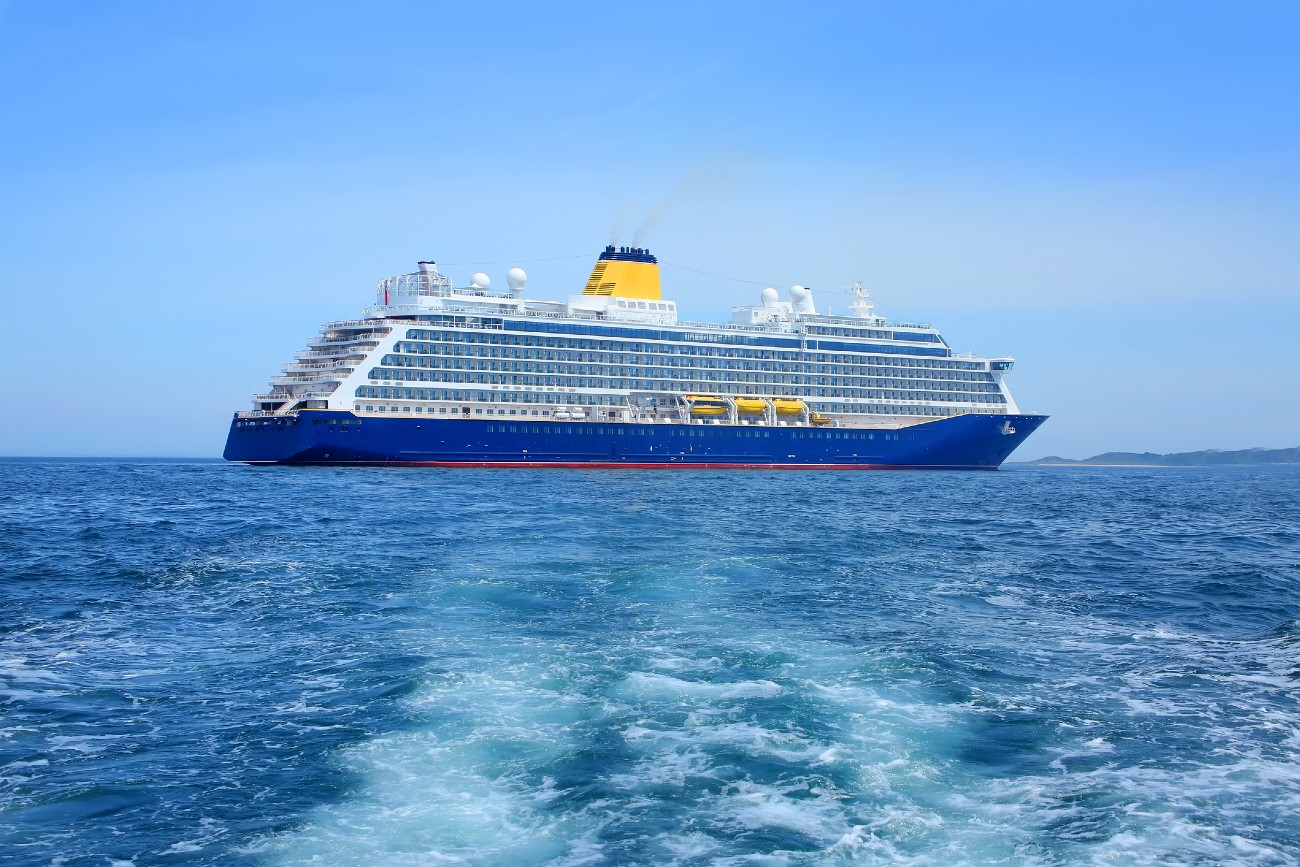
When we hear the name The Channel Islands, the first thing that comes to mind is nature, beach, sea, tourism and landscapes. Being a group of small islands, the last thing that would come to mind is literature, writing and famous authors. Nevertheless, you would be surprised to know how this place has served as an inspiration for writers, some of them legendaries.
Victor Hugo
Undoubtedly the most famous of them was the French poet, playwright and romantic novelist, Victor Hugo, who, after a brief exile in Belgium following Napoleon III’s coup in France, left Brussels in 1852 to go into exile in Jersey.
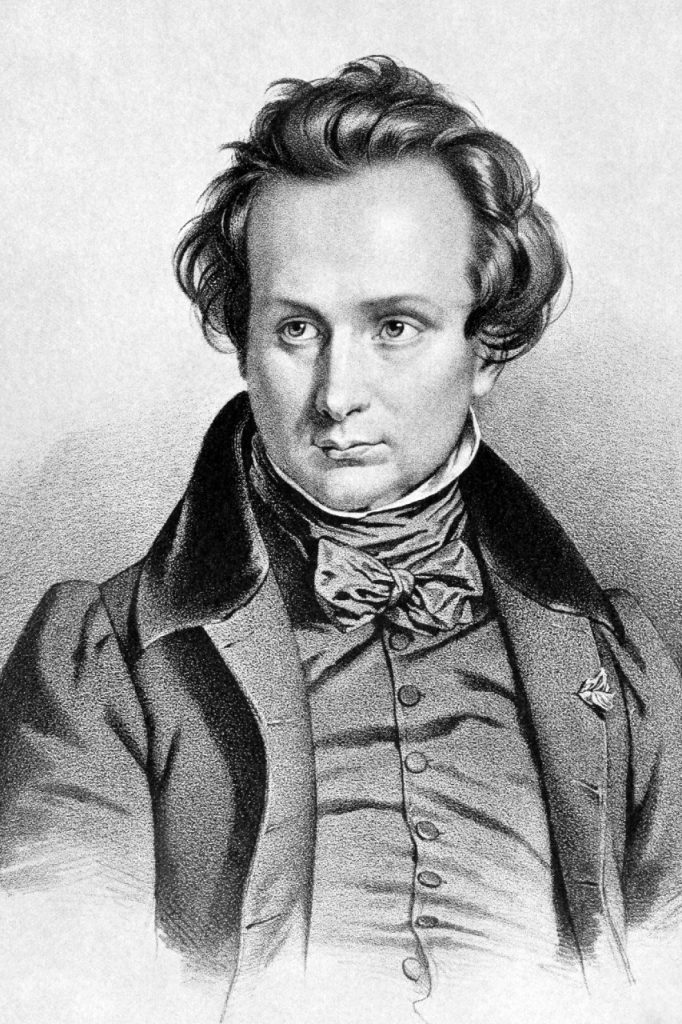
Victor Hugo on antique print
Three years later, in 1855, after criticizing Queen Victoria for her visit to France, he moved to the island of Guernsey. There he lived in Hauteville House, a house that he himself decorated with objects that he collected during his long walks, and that served as a source of inspiration to write works such as:
Les Contemplations or The Contemplations (1856): a collection of six poetry books that serve as a tribute to his daughter Léopoldine Hugo, who drowned in the Seine River.
La Légende des siecles or The Legend of the Ages (1859): three series of long epic poems where the author criticizes the technical progress of humanity and the excesses of men willing to devour each other.
Les Travailleurs de la mer or The Toilers of the Sea (1866): a novel that tells the facts and lives of the fishermen and sailors of the islands. With it Hugo closes his great novelistic cycle, and manages to leave us indelible prints of the free spirit of the people of the sea and the eternal struggle of man with nature.
Although the novel was written in the sixties of the nineteenth century, the work is set in the twenties of the same century and the author pays homage in this work not only to Guernsey, but to the islets that surround it, like Les Houmets, Les Minquiers and Ortac.
Les Misérables or The Miserables (1862): Victor Hugo’s fundamental work and one of the greatest novels of the 19th century. Set during the events of the Rebellion of June 1832, in it the author presents what is his political ideology.

Les Miserables
Les Misérables tells the story of Jean Valjean, an ex-convict who was imprisoned for twenty years for stealing a piece of bread, who becomes an exemplary man that fights against misery and injustice and who pledges his life to take care of the daughter of a woman who had to prostitute herself to save the girl. Thus, Jean Valjean is forced to change his name several times, is arrested, escapes and reappears. At the same time, he must elude Commissioner Javert, an inflexible policeman who pursues him convinced that he has pending accounts with the justice.
Victor Hugo also mentions Ortac and Les Casquets in his novel L’Homme qui Rit (The Laughing Man), published in 1869, when he writes:
To be wrecked on the Casquets is to be cut into ribbons; to strike on the Ortac is to be crushed into powder… On a straight frontage, such of that of the Ortac, neither the wave nor the cannon ball can ricochet… if the wave carries the vessel on the rock she breaks on it, and is lost…
Guernsey
We stayed on the island of Guernsey to talk about GB Edwards, a native of this place who wrote one of the most emblematic works of this British dependency. It is the novel The Book of Ebenezer Le Page.
This book tells the story of Ebenezer Le Page, an eighty-year-old from Guernsey that has only left the island to travel to Jersey. At his age, the man decides to write a book where he will tell his story, that of his family, that of the people who have surrounded him and the historical events that have affected the island, such as World War I and the invasion of the Nazis to The Channel Islands during World War II.
Set in London in 1946, after the end of World War II, The Guernsey Literary and Potato Peel Pie Society, was written in 2008 by Mary Ann Shaffer and Annie Barrows, and tells the story of Juliet Ashton, a young writer in search of inspiration, that receives a letter from a stranger named Dawsey Adams. The man, who lives in Guernsey, is reading a Charles Lamb book that had previously belonged to Juliet. The questions then arise as to how that book came into the hands of Adams. That is why Ashton decides to go to the island and meet The Guernsey Literary and Potato Peel Pie Society, on a trip that will change her life.
The Shaffer and Barrows book, which became a bestseller upon publication, was also made into a film in 2017, starring Lily James and directed by Mike Newell.
And since we previously mentioned the World War I, for those who wish to delve a little deeper into historical issues and learn about Guernsey and its inhabitants, the book Diex Aix: God Help Us – The Guernseymen who marched away 1914-1918, by Edwin Parks, published in 1992, it tells the story of the men who enlisted during the Great War to defend the British Crown.
Channel Islands at War: A German Perspective by George Forty is another interesting text for those who want to learn about the history of The Channel Islands during WWII, in this case, from the German perspective. It is a book with 252 pages, more than half of them with photographs, of what was the Nazi occupation from 1940 to 1945.
Jersey
One of the islands that has produced the most writers is Jersey. Wace, also known as Robert Wace, was a 12th century Norman poet who is recognized as the oldest writer in the area.
Fast forward a bit in time, we have Jersey-born authors like:
Elinor Glyn, although she was born on the island, from a very young age she was educated in Canada and lived much of her life in the United Kingdom. The writer specialized in romantic fiction novels, considered scandalous for her time (early 20th century).
John Lemprire was also born in Jersey in 1765, but most of his professional life as a teacher, lexicographer and theologian was in London.
Philippe Le Sueur Mourant, was educated outside of Jersey, but returned to the island in 1880 (he was born in 1848), where he wrote a series of stories in La Nouvelle Chronique de Jersey with a fictional character called Bram Bilo, a former honorary police. These stories achieved great popularity.
In 1911, Philippe Le Sueur Mourant eliminates the character of Bram Bilo and begins to write about the Pain Family, who move to Saint Helier, the capital of Jersey, from the country where they lived, and their adaptation to life in the city .
The lawyer, journalist, poet and politician Robert Pipon Marett (1820-1884) was also from Jersey. In 1856, he was elected Constable of St. Helier. He was one of the founders of the newspaper La Patrie, where under the pseudonym Laelius, he wrote poetry in the traditional language of the island’s inhabitants.
Augustus Asplet Le Gros was short-lived (1840-1877), but long enough not only to have been elected judge of the court of the Bailiwick of Jersey, but also to write Poems for Home and Fireside (London, 1863) and Poems ( London, 1868), as well as the history of Jersey’s Chateau de Mont-Orgueil (Mont Orgueil Castle): Mont Orgueil Castle: Its History and Ruins.
Gerald Durrell was a British writer, naturalist and conservationist who made Jersey his home. He was the founder of the Jersey Zoo and what is now known today as the Durrell Wildlife Conservation Trust, a foundation that advocates for conservation worldwide.
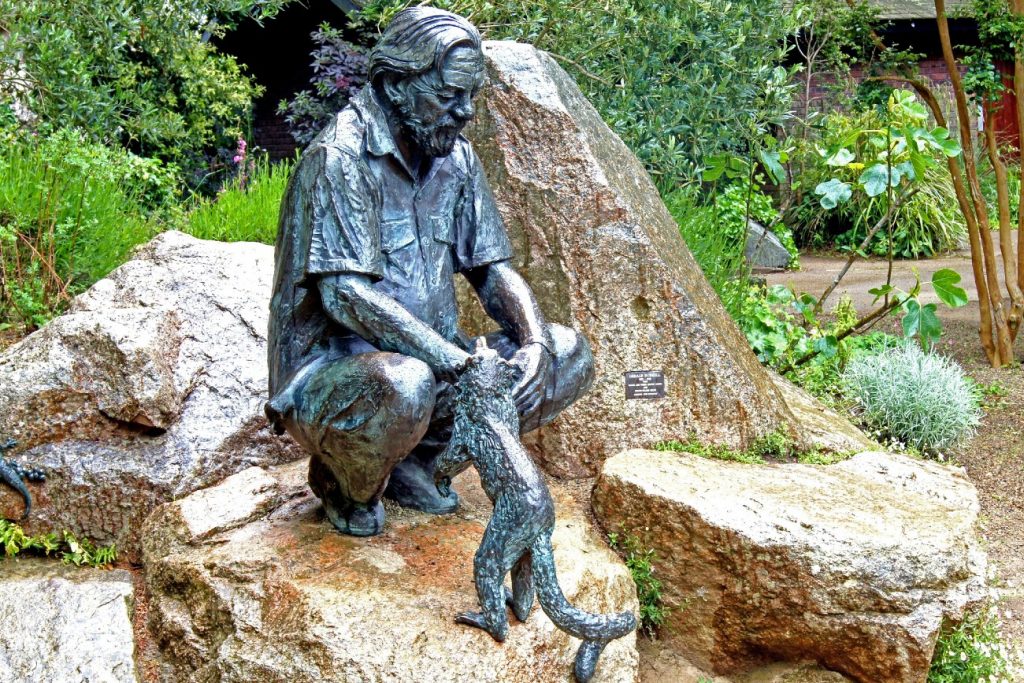
Jersey Zoo – Gerald Durrell statue
Durrell wrote countless books on his adventures around the world in the search and conservation of animals. We can mention: The Overloaded Ark (1953), A Zoo in My Luggage (1960), Menagerie Manor (1964), Golden Bats And Pink Pigeons: A Journey to the Flora and Fauna of a Unique Island (1977) and what is known as the Corfu Trilogy which includes: My Family and Other Animals (1956), Birds, Beasts, and Relatives (1969), and The Garden of the Gods (Fauna and Family) (1978).
Among his non-fiction books we have: Island Zoo: The Animals a Famous Collector Couldn’t Part (1961), Look at Zoos (1961), and A Practical Guide for the Amateur Naturalist (1982).
Some of his fiction books by him are: The Donkey Rustlers (1968), The Fantastic Flying Journey: An Adventure in Natural History (1987), and The Fantastic Dinosaur Adventure: A New Adventure in Natural History (1989).
While the most famous novel by British author Jack Higgins in his extensive writing career is The Eagle Has Landed (1975), which sold more than 50 million copies and even made a movie, his book Night of the Fox (1986) was also a literary success. It is set in Jersey and tells the story of a veteran British agent who must rescue an American colonel who has been shipwrecked near the German-occupied island of Jersey. The success of the operation is even more problematic due to the presence on the island of a double of Marshal Rommel.
Alderney
T.H. White not only found in Alderney the peace and quiet that most of those who decide to settle in this and any of The Channel Islands seek, but he also found the inspiration to write his novels.
Mistress Masham’s Repose (1946), which tells the story of Maria, an orphan girl, who discovers a universe that will captivate her forever. It is a small island in the middle of a lake where Lilliputians (reference to Gulliver), giant foxes, babies in nutshells and usurping magpies live, intrigue is also present in the form of malevolent characters and important objects that have been lost.
In 1947 he published The Elephant and the Kangaroo, which tells the story of a new flood taking place in Ireland.
Sark
Although Sark has not been characterized by having great novelists, the island has been the scenery of different literary works written in recent years. Such is the case of the book by Mervyn Peake, Mr. Pye, a man that, equipped with love, travels to the island on a mission to convert the islanders into a crusading force for the undiluted goodness that he feels within.
In The Sirens Sang of Murder (a novel by Sarah Caudwell) Michael Cantrip, a young lawyer travels to Sark to take on a tax-law case. The members of his legal team must find the missing heir, but, in their task, each one of them begin to mysteriously disappear. Cantrip is now asking for help from the gang at the home office. Now it’s up to amateur investigator Hilary Tamar to get Cantrip back to the safety of his chambers. This is one of my favourite books.
Herm
The writer Compton Mackenzie wrote the 1926 novel Fairy Gold, which tells the story of a Cornish Knight who lives on the island of Herm with his two daughters and son. The boy is sent to the front during World War I, but loses his life in combat. A young English soldier is sent to guard the neighboring island. The daughters befriend the soldier, but the bereaved knight wants nothing to do with him.
Catherine Calamis published in 1996 Hidden Treasures of Herm Island: The Complete Guide to the Island’s History, which tells the history of the island from Neolithic times.
Where Seagulls Dare: and other tales from Herm Island by Paul Sherman, was published in 2018, and it comprises twelve short stories about the island’s history, its myths and legends. Includes ghost stories, horror stories, humor, wartime stories and much more. A must-read for anyone visiting Herm or about to do so.
The Channel Islands offers a great variety of literature to know its history, its secrets, its anecdotes and its geography. The large number of authors who have found inspiration in their landscapes, routes and towns gives us an idea of how much we can discover in these islands, whether we are visiting or thinking of settling in one of them.
Find out what other activities you can enjoy on the Channel Islands in the following article: Sailing to The Channel Islands


